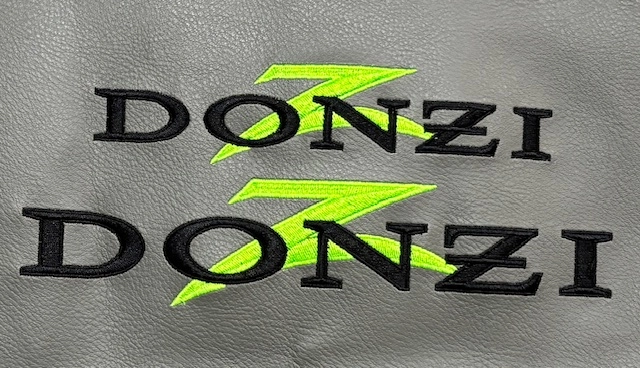Customized Lab Coats with Embroidery for Medical Professionals
Customized Lab Coats with Embroidery for Medical Professionals
Blog Article
The Art of Custom-made Needlework: Opening the Keys to Creating Unique and Memorable Designs
The keys to developing custom-made embroidery designs that captivate the eye and leave a lasting impression lie in a fragile balance of technique, creative thinking, and focus to detail. As we delve right into the world of custom needlework, we reveal the nuanced interaction between string option, stitch intricacy, and layout personalization that elevates a plain garment to a job of art.
Choosing the Right Needlework Threads
When choosing embroidery strings, what crucial factors should you consider to make sure the ideal results for your custom layouts? The choice of embroidery string is crucial in figuring out the last end result of your embroidered style. Among the key factors to consider is the product of the thread. Different materials such as cotton, polyester, rayon, and silk use differing levels of sheen, toughness, and texture. It is vital to pick a string material that matches the textile you are stitching on and aligns with the desired look of the design.
Moreover, the weight or density of the string plays a significant duty in the look of the needlework. Thicker strings can include dimension and structure to your style, while finer threads are perfect for elaborate details and little text. Additionally, considering the color fastness and washability of the string is crucial to make certain that your personalized layouts preserve their high quality and vibrancy in time. By thoroughly assessing these aspects and choosing top notch threads that meet your details needs, you can improve the visual allure and durability of your embroidered creations.
Checking Out Different Stitch Methods
To look into the realm of 'Discovering Different Stitch Strategies', one need to understand the complexities and nuances that each sewing method gives the art of embroidery. Various stitch techniques not just add aesthetic interest however also add to the overall structure and measurement of the design. One preferred stitch technique is the satin stitch, which includes very closely packed parallel stitches to produce a smooth and shiny surface, perfect for filling out shapes and creating strong lays out.
On the other hand, the backstitch is a functional strategy typically made use of for outlining and adding great information. It involves stitching backwards to create a solid line of needlework. In addition, the French knot stitch adds a tactile aspect to styles, excellent for creating textured accents like blossom facilities or attractive touches.
Exploring different stitch methods permits embroiderers to play with light, shadow, and depth within their styles, raising the aesthetic allure and imaginative top quality of their needlework projects. By mastering various sewing approaches, one can open countless opportunities for developing unique and memorable customized embroidery pieces.
Incorporating Personalized Design Aspects
Having checked out the details of various stitch strategies such as the satin stitch, backstitch, and French knot, the emphasis currently moves towards integrating customized style elements in custom embroidery tasks. Individualized layout components play an essential function in making needlework jobs truly unique and unforgettable. One means to include customization is by adding initials, names, or significant dates to the style. This not only adds a personalized touch but additionally improves the sentimental worth of the needlework piece.
An additional method to include individualized design aspects is by including symbols or themes that hold special significance to the recipient or reflect their rate of interests and personality. Integrating a favored flower, animal, or hobby-related icon can make the embroidery style extra meaningful and individualized. Additionally, choosing shades that reverberate with the recipient or align with the designated motif can further improve the customization of the needlework project.
Grasping the Art of Shade Control

One trick aspect of shade control is comprehending shade theory. This consists of recognizing just how different colors engage with each various other, the feelings they communicate, and just how they can be incorporated to create aesthetically enticing designs. By using color theory concepts, embroiderers can produce unified color schemes that enhance the general appearance of the layout.
Additionally, focusing on comparison is essential in shade control. Utilizing contrasting colors can assist particular components of the design click here now pop, enhance clarity, and develop an aesthetically dynamic embroidery piece. By grasping the art of color control, embroiderers can boost their designs and create unforgettable items that reverberate with customers and viewers alike.
Enhancing Texture With Advanced Embroidery Stitches
French knots, for instance, are excellent for including small, raised dots to your style, simulating the appearance of grains or producing a textured surface. Bullion knots, on the other hand, can be utilized to produce twisted, ropelike aspects that include an elegant feel to the embroidery. Seed stitching involves tiny, scattered stitches that can fill in areas with a multicolor texture, while turkey job produces cosy, dimensional accents similar to pet fur or foliage. Exploring with these sophisticated embroidery stitches allows you to push the boundaries of traditional needlework and develop absolutely special and visually appealing appearances in your layouts.
Conclusion
In verdict, the art of personalized embroidery involves a mix of selecting the best strings, exploring various stitch strategies, including tailored style elements, understanding color sychronisation, and enhancing appearance with sophisticated stitches. By understanding and applying these crucial elements, embroiderers can produce distinct and unforgettable layouts that display their creativity and ability. Embroidery lovers can unlock the tricks to creating attractive and bespoke items that stand apart and leave a long-term perception.
Report this page